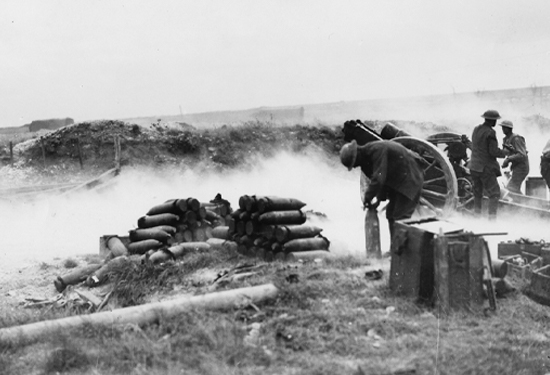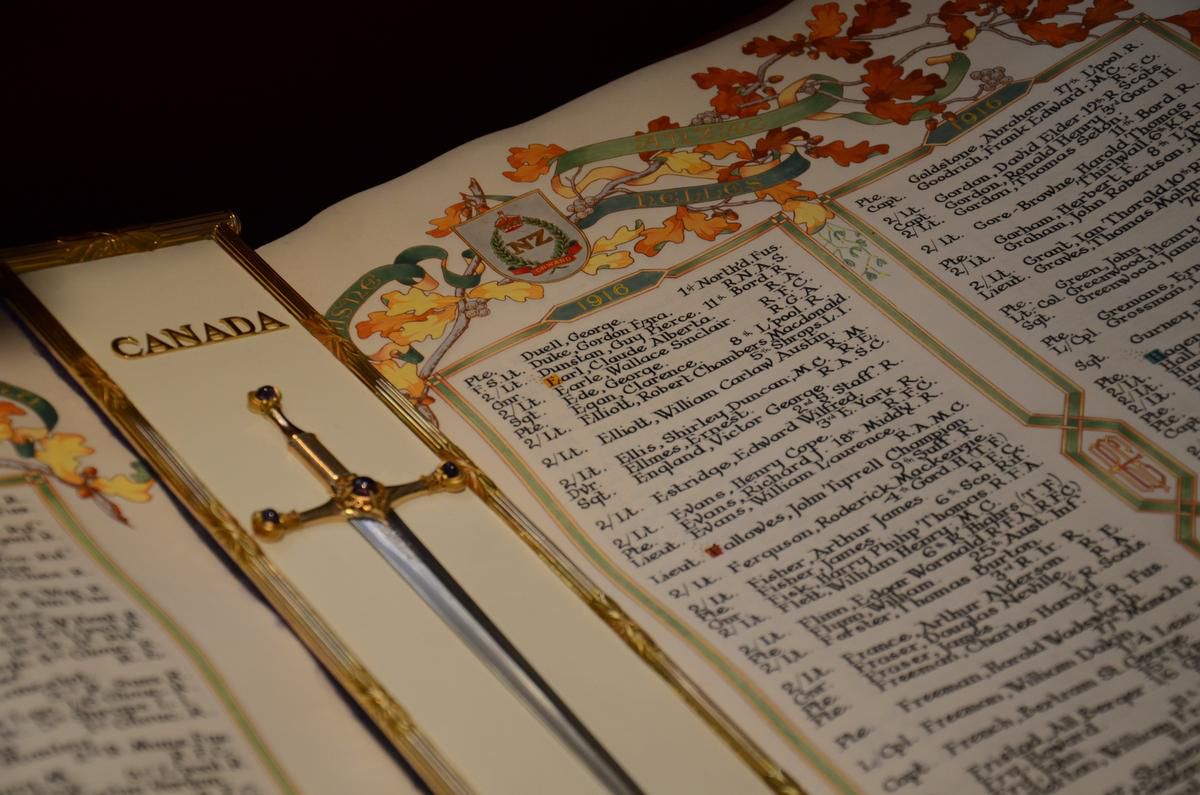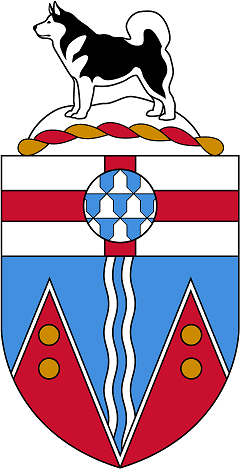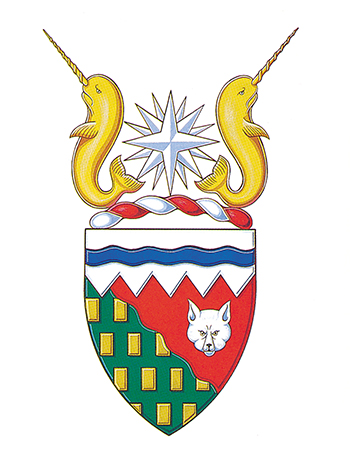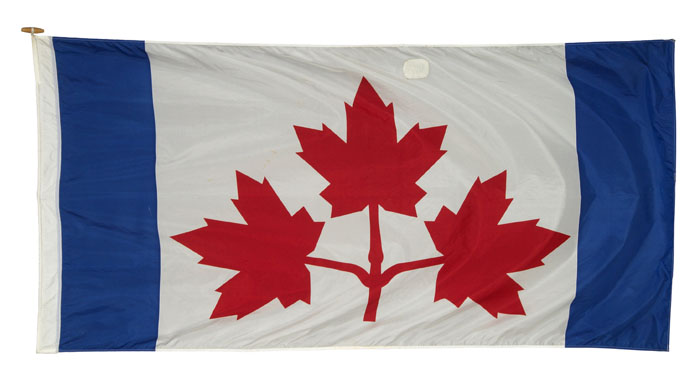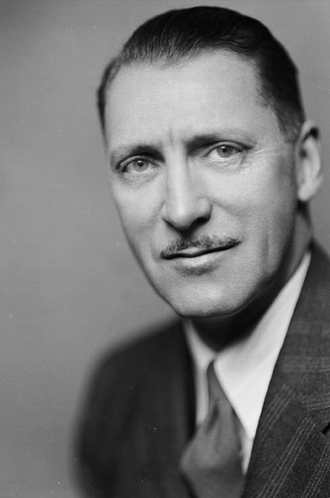
A Canadian Artist and Expert in Heraldry - Alan Brookman Beddoe
LCDR ALAN BROOKMAN BEDDOE Section 41, Lot 119 SW, Grave B
Alan Brookman Beddoe was born on June 1, 1893 in Ottawa. He was educated at the Model school and later at Ashbury College. During World War I, he enrolled with the Second Battalion of the Canadian Expeditionary Force. He was captured at Second Battle of Ypres in 1915 and spent two and a half years in the prisoner of war camps at Gießen and Zerbst.
The Second Battle of Ypres was fought during the First World War from 22 April to 25 May 1915. It was the first major battle fought by Canadian troops in the Great War. The battle took place on the Ypres salient on the Western Front, in Belgium, outside the city of Ypres (now known by its Flemish name, Ieper). The untested Canadians distinguished themselves as a determined fighting force, resisting the horror of the first large-scale poison gas attack in modern history. Canadian troops held a strategically critical section of the frontline until reinforcements could be brought in. More than 6,500 Canadians were killed, wounded or captured in the Second Battle of Ypres.
After the war, he began studying art at the École des Beaux-Arts in Paris and later at the Art Students League of New York under DuMond and Bridgman.
In 1925, Beddoe returned to Ottawa where he opened the first commercial art studio in the city. Beddoe was deeply involved in the creation of the Books of Remembrance. James Purves, the artist originally chosen for the job after World War I, died in 1940 after having spent eleven years gathering the necessary materials for the book.
Canada’s Books of Remembrance hold the collective memory of a nation. In them, the names of the more than 120,000 Canadians who have made the ultimate sacrifice while serving Canada in uniform are remembered with beautiful penmanship. Every brush stroke and every letter is done by hand. It is a painstaking process that gives him a sense of connection to the past.
After his death, the task passed to Beddoe, who had been working as Purves’ assistant. Beddoe finished the first Book in 1942, and over the next 30 years he supervised a team of artists illuminating and hand-lettering all subsequent books, listing the names of Canadians who lost their lives serving their country's military during World War II, the Korean War and the South African Wars.
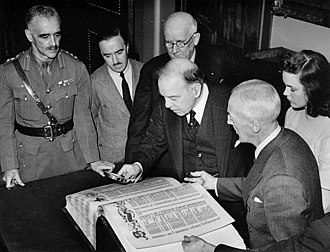
Beddoe was inducted to the Order of the British Empire and received the Allied Arts Medal awarded by the Royal Architectural Institute for his work on the Books. In addition to the Canadian Books of Remembrance, he was also involved with the creation of the South African Book of Remembrance from 1956 to 1966.
Beddoe was also an expert in heraldry, and designed postage stamps, posters, crests, money, architecture and coats-of-arms as well as other materials related to Canadian heraldry. In 1942 Beddoe was commissioned to design the official badges for the Royal Canadian Navy’s ships.He created over 180 for the RCN’s ships and various establishments, and was appointed the navy’s heraldic advisor in 1957. He also designed coats of arms for the Yukon and Northwest Territories in 1956, and painted watercolours of the coats of arms for Canada, provinces and territories.
Yukon's coat of arms was commissioned by the federal Department of Indian Affairs and Northern Development and designed by well-known heraldry expert Alan Beddoes in the early 1950s.
It was approved officially by Queen Elizabeth II in 1956. The Northwest Territories’ coat of arms was granted by Queen Elizabeth II in 1956 and represents the geography of the Northwest Territories at that time.
Beddoe was tapped to revise Canada’s Coat of Arms in 1957, and his version remained in use until 1994. Beddoe also painted coats of arms for individuals, various municipalities including Gloucestor, Ontario and the Township of Esquimalt (Vancouver Island) and universities such as the Memorial University of Newfoundland and the University of Moncton.
During the Great Flag Debate of 1964, Beddoe was the primary advisor and artist to Prime Minister Lester Pearson, the Cabinet and the Parliamentary Flag Committee. He designed the ‘Pearson Pennant’ (three red maple leaves on a white background with blue bars on either side representing “From sea to sea”) and produced numerous other designs for consideration.
Known as the “Pearson Pennant,” this design for a Canadian flag was proposed by Prime Minister Lester B. Pearson in 1964. The design was unpopular with Canadians, and an all-party Parliamentary committee selected the familiar single maple leaf design instead. The Canadian flag flew over Parliament Hill for the first time on February 15, 1965.
In 1968 he was made an Officer of the Order of Canada. Beddoe died in Ottawa, Ontario on December 2, 1975 at the age of 82.


